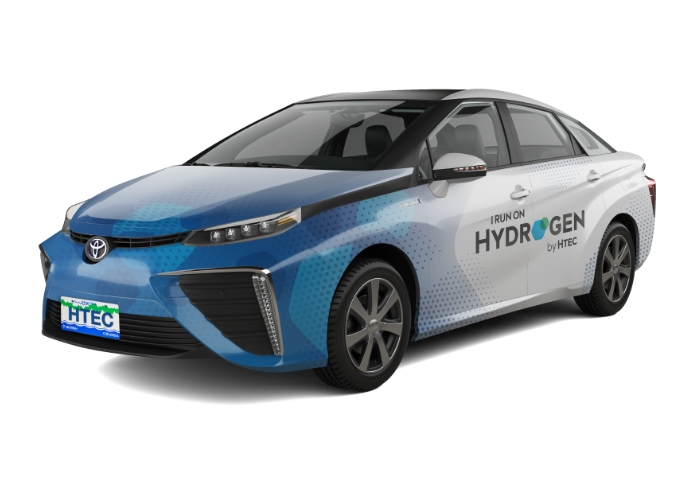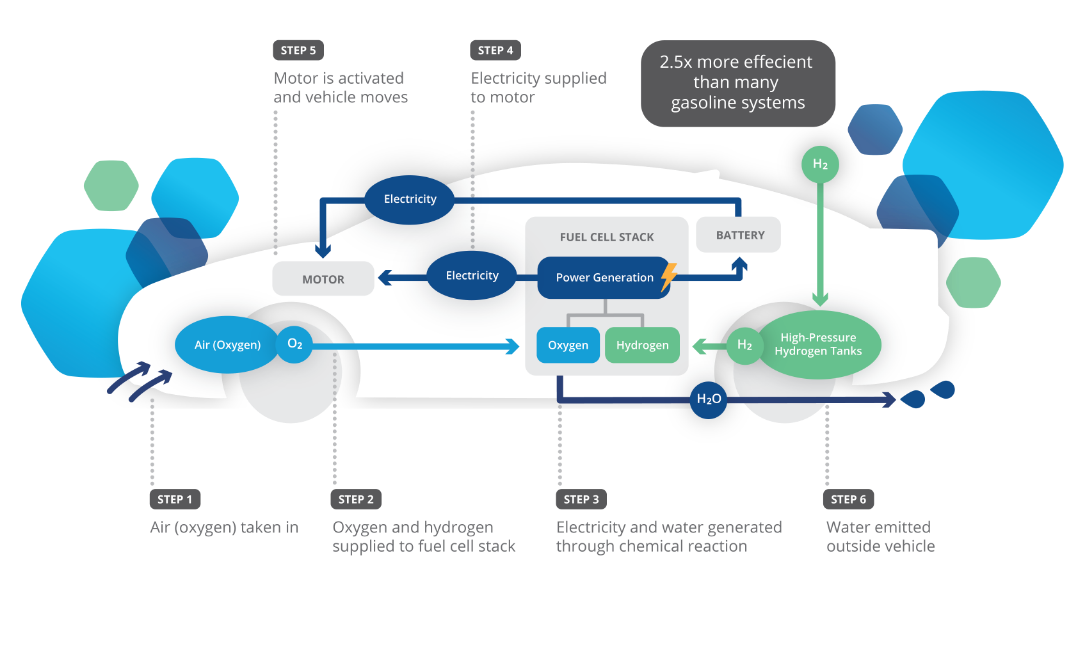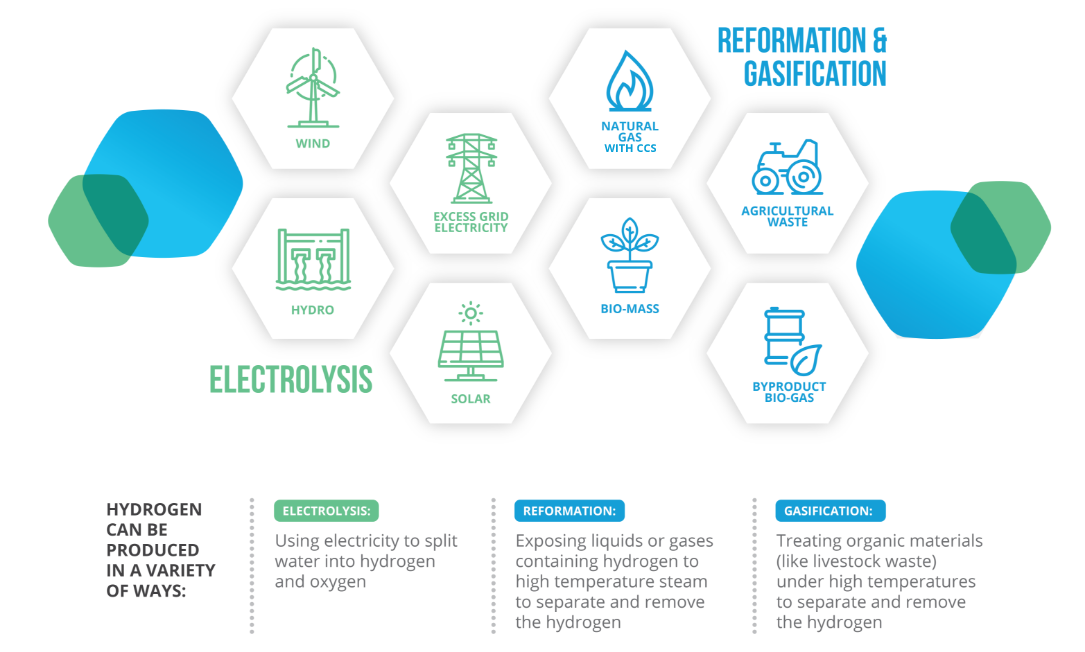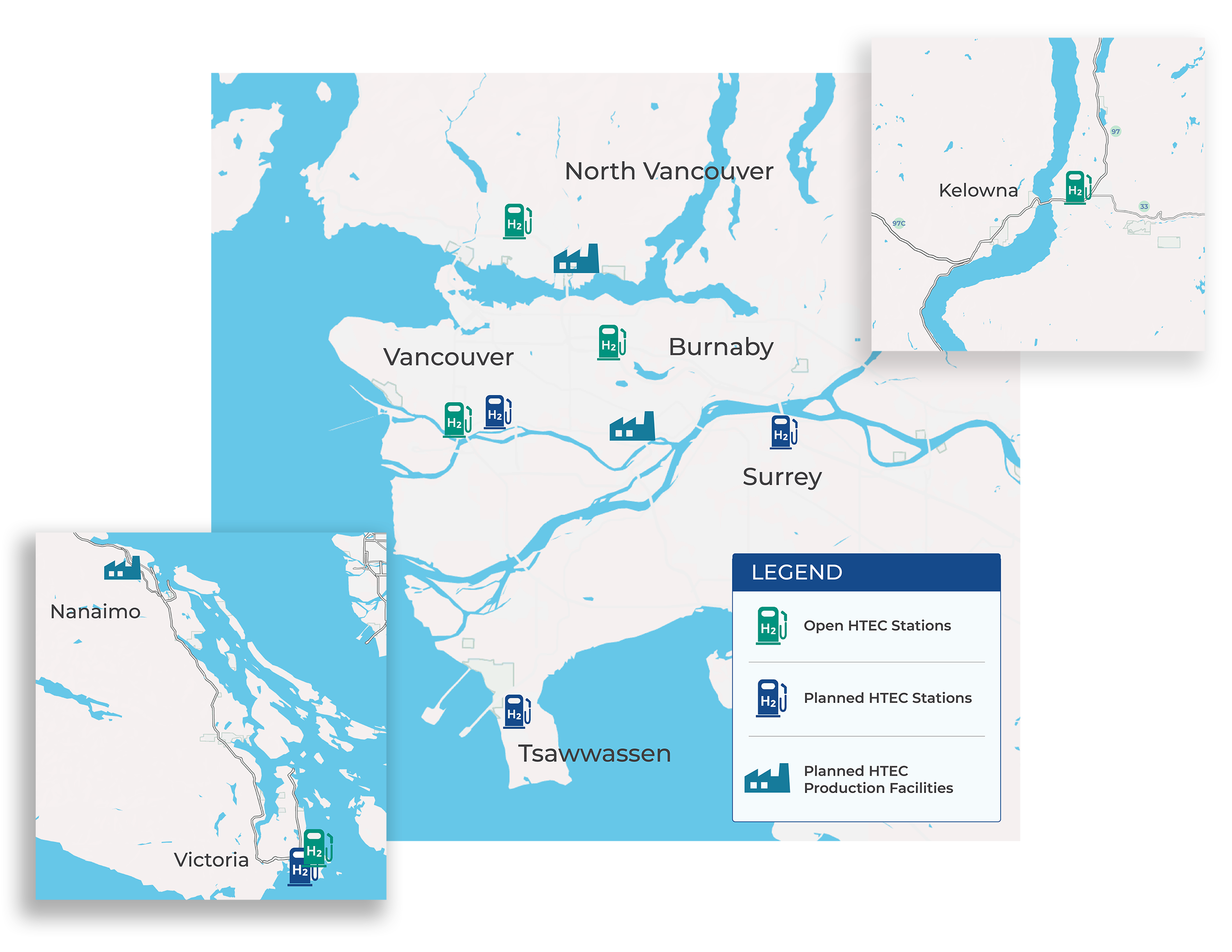Hydrogen, Safety &
FCEVs
There’s a growing global need to decarbonise the energy we use for transportation, industry, homes, and workplaces. Hydrogen is part of the solution.
Hydrogen is Safe!
50+ years of safe industrial use
Millions of metric tons safely produced annually
More than one million fills annually
More than 10 million miles of safe, on-road hydrogen FCEV experience
Vehicles and infrastructure are designed with safety in mind
Globally accepted and enforced codes, standards, and fueling protocols
Non-toxic
Lighter than air
Hydrogen and fuel cell electric vehicles (FCEVs)
• Eliminate vehicle tailpipe emissions – greenhouse gases and urban smog.
• Allow for highly efficient use of energy.
• Enable a number of low-carbon-intensity transportation fuel supply pathways.
Hydrogen and fuel cell electric vehicles (FCEVs)
• Eliminate vehicle tailpipe emissions – greenhouse gases and urban smog.
• Allow for highly efficient use of energy.
• Enable a number of low-carbon-intensity transportation fuel supply pathways.

Key Features of hydrogen FCEVs.
Electric
Enjoy an electric motor and drive train for a quiet, smooth, and powerful ride
Range
Similar to a gasoline vehicle: 500+ kilometres between fills
Refill Time
About three to five minutes to fill the tank
Cold & Heat
From below zero to desert-like conditions with no impact to performance
Emissions
Nothing but water vapour from the tailpipe
How does a hydrogen FCEV work?

Where does hydrogen come from?

Find a hydrogen station in BC.

